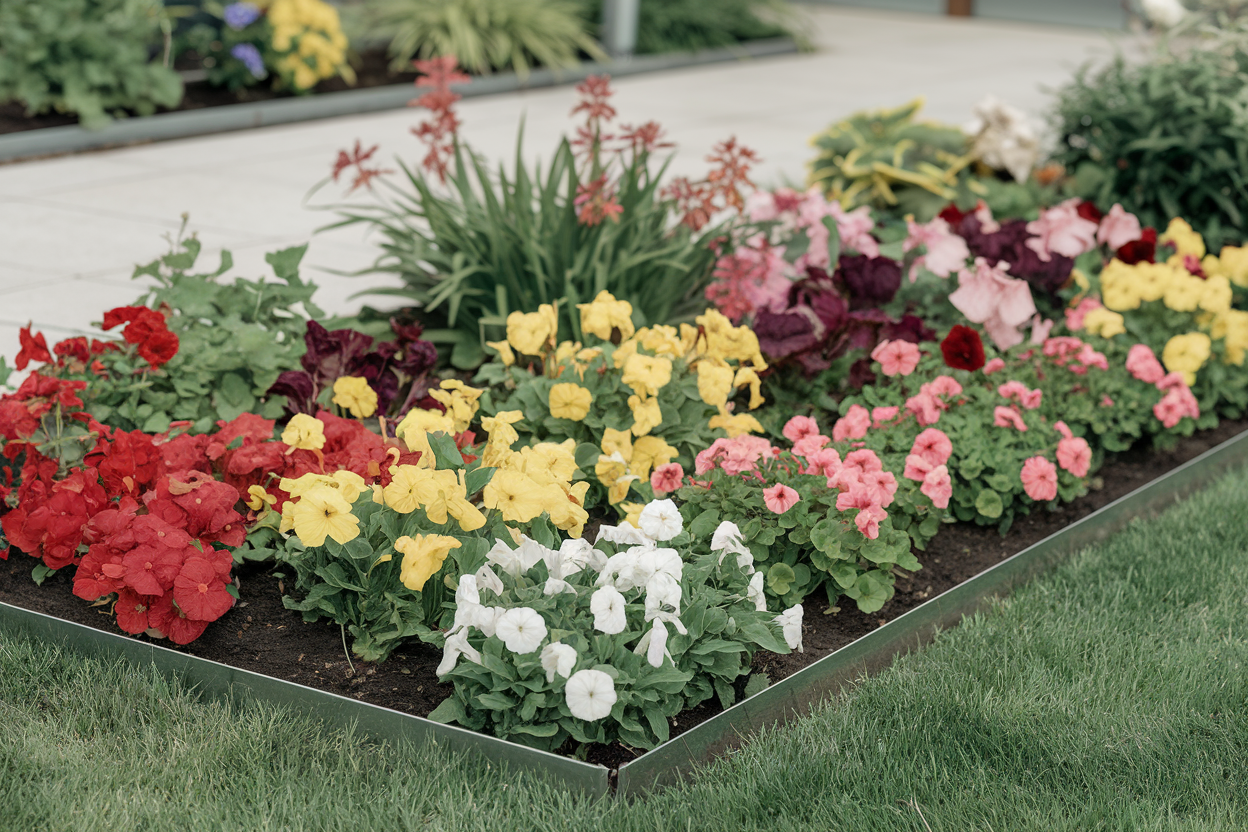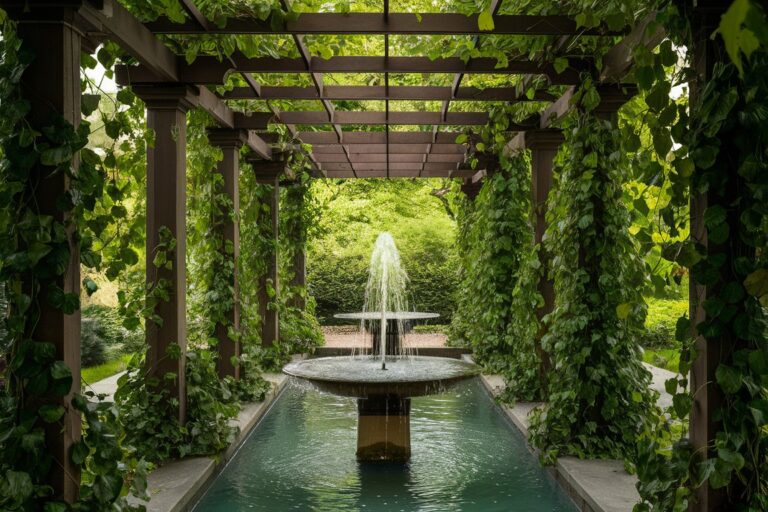Flower Bed Edging Ideas That Upgrade Your Garden Game
This article contains all the flower bed edging ideas that can be used to add beauty to your garden.
Do you ever spend hours planting your favorite flowers, step back to admire the masterpiece—and then notice your mulch is creeping into the grass like a rogue toddler with no supervision? Yeah, same. That’s where flower bed edging ideas come in. It’s not just about clean lines and organization (though, yes please), it’s also about showing off your garden’s personality. Think of edging like the eyeliner of your yard—it defines the shape, adds some flair, and keeps everything looking sharp.
I used to think edging was just another weekend chore. But now? I actually look forward to it. The right edging transforms your garden from “meh” to “whoa, are you a landscape designer or something?” So grab your gloves, and let’s talk flower bed edging ideas—without the boring list format. Just real talk from one garden lover to another.
What Is Edging in Landscaping?
Edging in landscaping is basically drawing the line between “I care about my yard” and “my grass is staging a hostile takeover.” 😅 It’s the stuff you put around flower beds, pathways, or lawn sections to separate spaces, keep things tidy, and add a bit of style while you’re at it. Think of it like the frame around a painting—it’s not the star of the show, but wow, it makes everything look way more put together. Whether you’re using stone, brick, metal, or even plants, edging tells the mulch where to stay, the grass where not to go, and gives your whole yard that “yes, I meant to do this” kind of vibe.
Natural Stone Edging: Rugged, Rustic, and Totally Timeless
You can’t go wrong with natural stone. It’s like the jeans of garden design—versatile, low-maintenance, and always in style. I’m talking irregular flagstone, chunky river rocks, or even slate if you’re feeling fancy. Stones bring this earthy, grounded feel to your garden that says, “Yeah, I’ve got taste—and also strong biceps from lifting these.”
I love using stone in gardens that already lean into wild, whimsical vibes. If you’ve got lavender spilling over the edges, ornamental grasses swaying in the breeze, and bees buzzing around like they pay rent, stone will fit right in.
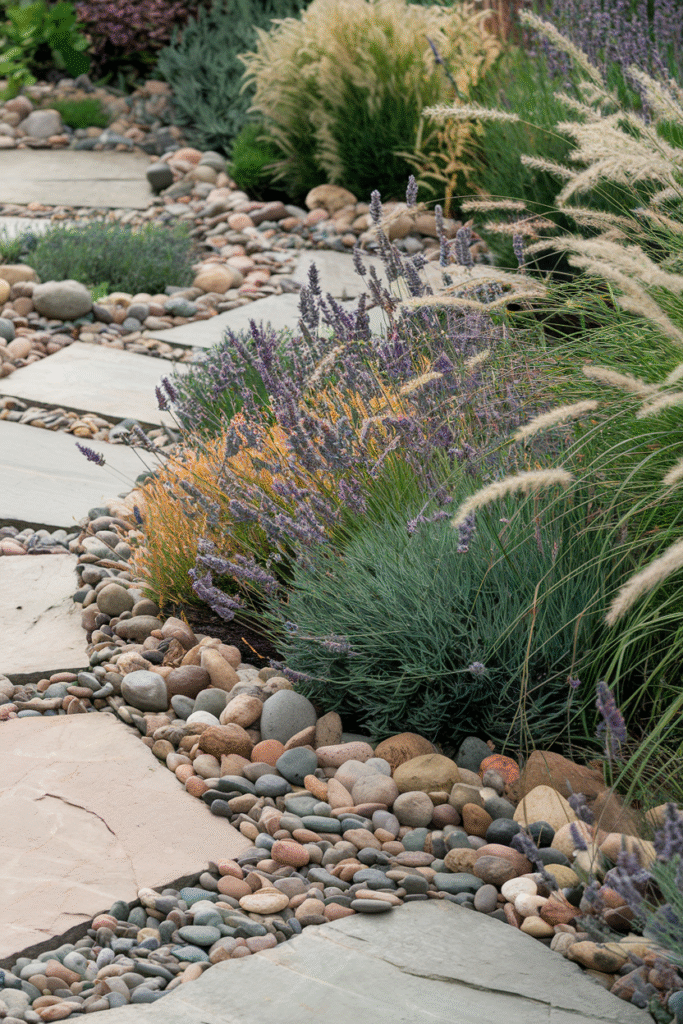
Why It Works
- It blends effortlessly with nature.
- It holds its shape without a lot of babysitting.
- It gives your flower bed some serious texture and depth.
Just don’t drop one on your foot. Trust me on that.
Metal Edging: Sleek, Modern, and Surprisingly Easy to Work With
Now, if you’re more into clean lines and modern aesthetics, metal edging might be your jam. I know, it sounds a little “industrial,” but hear me out—it’s gorgeous. Think black steel or aluminum strips that give your beds that crisp, professional finish without being flashy.
I tried it last year around my little succulent garden, and, not to be dramatic, but it was life-changing. It made my aloe and agave pop like they were in a magazine spread. Plus, you can bend it into curves, so you don’t have to stick to rigid lines if that’s not your vibe.
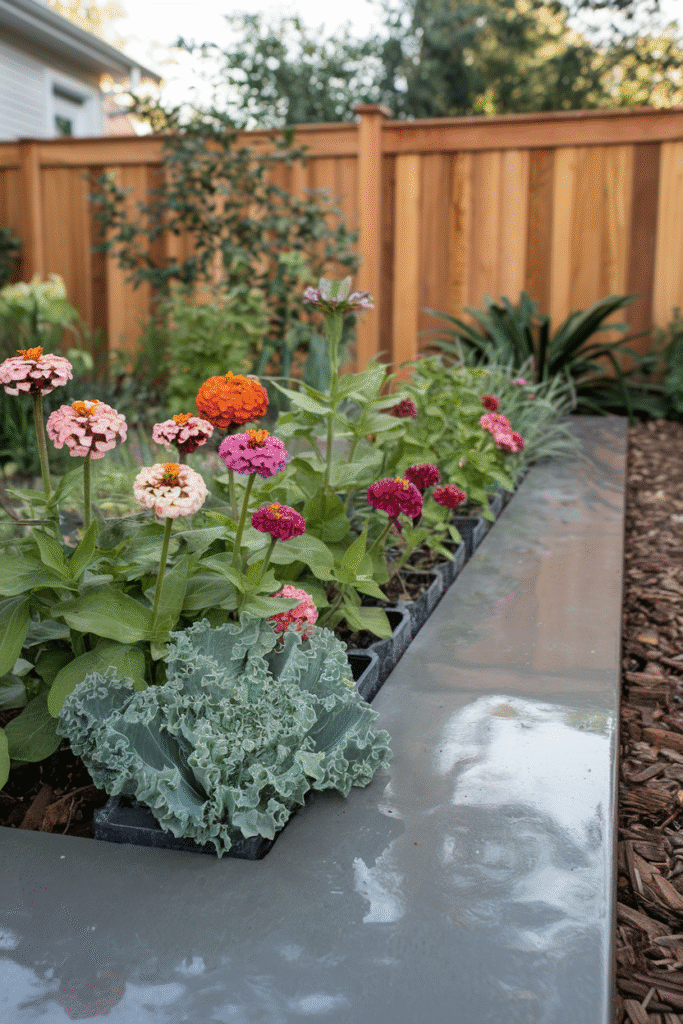
Quick Pro Tip
Always wear gloves when working with metal edging. Those sharp edges are not here to play nice, and I still have the band-aid budget to prove it.
Brick Edging: Classic Charm with a Cozy Cottage Feel
If your heart beats a little faster at the sight of a well-aged terracotta path, you’ll probably fall in love with brick edging. There’s just something about it—it’s warm, timeless, and gives your flower bed that storybook garden aesthetic.
I’ve used bricks both laid flat and stood on end, depending on the look I’m going for. Sometimes I even stagger them slightly for a worn, whimsical feel. Add some creeping thyme between the gaps, and boom—you’ve basically recreated the Cotswolds in your front yard.

What Makes Brick Special
- It’s affordable and easy to source.
- It works with almost any garden style.
- It gets more beautiful as it ages (wish we all did, right?).
And hey, FYI: reclaimed bricks are even better. They add character and cut down on waste. Win-win.
Wood Edging: Warm, Natural, and Customizable
Wood edging gives your garden that “I’m laid-back but still care about details” kind of vibe. I’ve used everything from pressure-treated lumber to cedar stakes, and honestly, it all depends on your garden’s personality. Want a tidy frame? Use timber boards. Feeling rustic? Go with log rounds or rough-cut planks.
Just keep in mind: wood does eventually break down. Especially if you live somewhere rainy or humid. So yeah, it might not last forever—but while it’s there, it looks amazing.
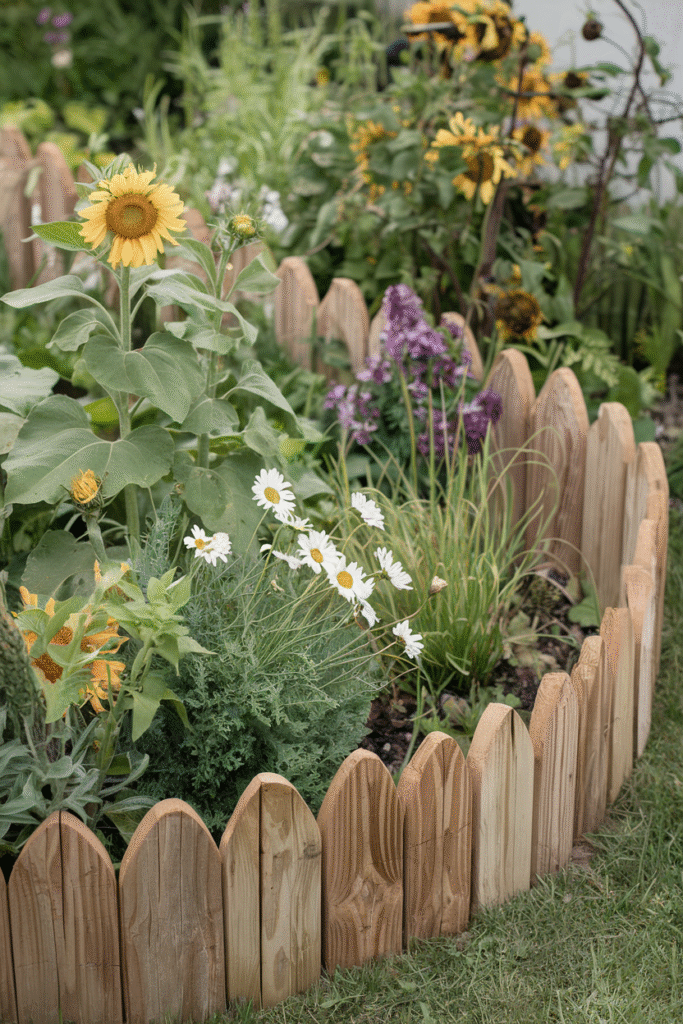
Tips for Longer Life
- Choose rot-resistant wood like cedar or redwood.
- Elevate it slightly with gravel beneath to avoid direct soil contact.
- Treat it with eco-friendly sealant if you’re feeling extra responsible.
IMO, wooden edging is perfect for vegetable gardens, raised beds, or anything where you want function and form to hang out together.
Concrete Edging: Clean, Durable, and Surprisingly Stylish
Now hear me out—concrete doesn’t have to be boring. These days, you can get precast concrete edging in all kinds of styles: scalloped, smooth, colored, and even stamped to look like stone. It’s like concrete woke up one day and said, “You know what? I am art.”
I used some gray concrete curbing around a mixed bed of zinnias and ornamental kale last fall, and it gave the whole thing a super polished finish. It’s also heavy-duty, which is code for “you won’t have to replace this every couple of seasons.”
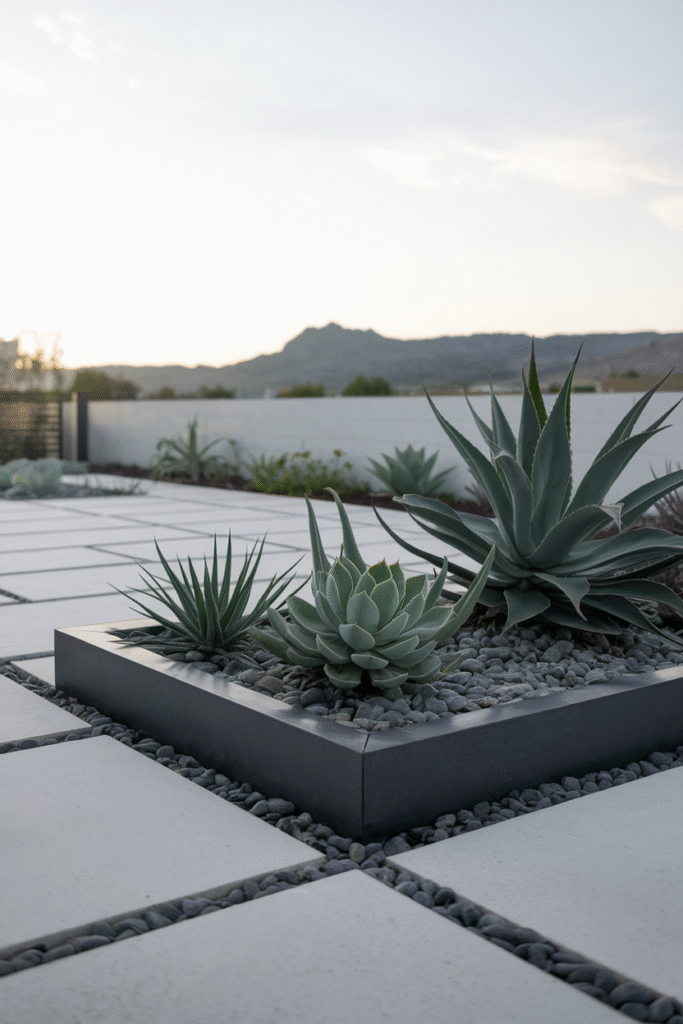
Concrete Perks
- It’s tough as nails.
- It keeps grass and mulch where they belong.
- It can be a bold design statement (yes, really).
One downside? It’s not exactly DIY-friendly unless you’re ready to rent some equipment and flex your inner mason. But if you’re okay with calling in a pro, concrete can be totally worth it.
Living Edging: Plants That Define the Border
This one’s a little different. Instead of hard materials, you use low-growing plants to edge your flower beds. Think sweet alyssum, lamb’s ear, boxwood, or even compact ornamental grasses. It’s a softer, more organic approach—and when done right, it’s chef’s kiss.
I’ve used lavender to edge my herb beds, and the result was dreamy. It buzzed with bees and smelled like a spa every time I walked by. What’s not to love?

Ideal For
- Cottage-style or informal gardens
- Pollinator-friendly spaces
- People who hate hauling rocks (hi, me)
Just make sure whatever plant you choose isn’t invasive or a high-maintenance diva. Nobody has time for that.
Mixed Material Edging: Break the Rules (But Make It Pretty)
Honestly? Sometimes the best flower bed edging idea is just doing what feels right. Combine stone with wood. Mix metal and brick. Use rope borders with gravel. There are no strict rules—except one: it should look intentional.
One of my favorite projects involved alternating bricks and flat river stones in a repeating pattern. It took forever, but it got compliments from neighbors I didn’t even know had gardens.
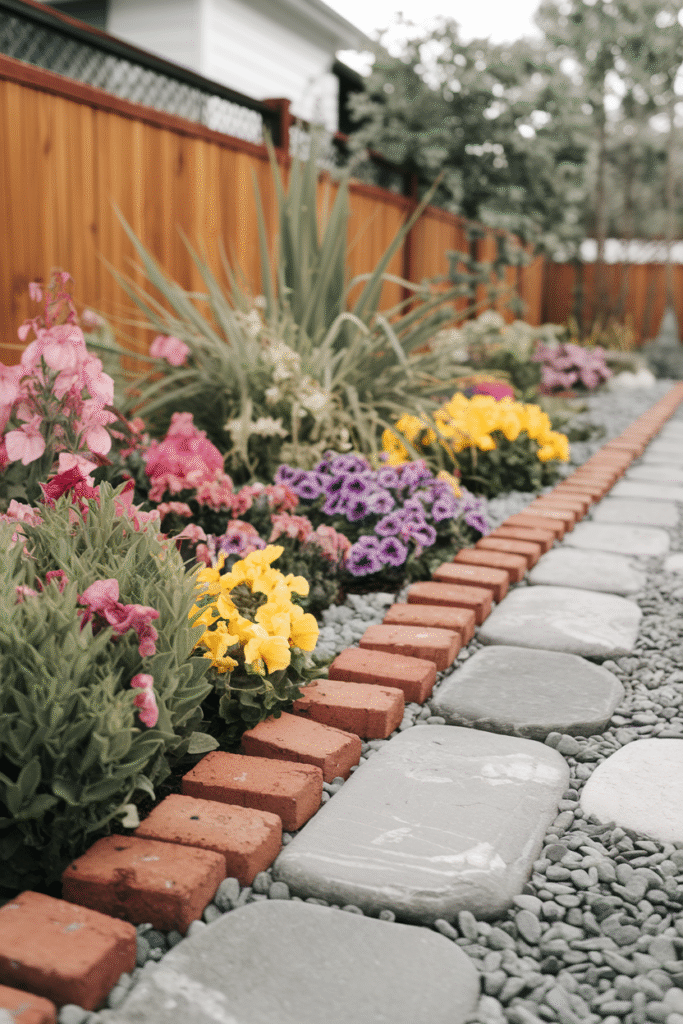
When you play with contrast and texture, your garden beds feel dynamic. It’s like accessorizing your outfit—don’t be afraid to layer.
Final Thoughts: Your Garden, Your Rules
At the end of the day, flower bed edging isn’t just about keeping things tidy. It’s about adding personality, polish, and a bit of structure to all that beauty you’ve worked so hard to grow. Whether you’re into sleek metal, cozy brick, or just want your lavender to have a little runway moment, there’s an edging style out there with your name on it.
So try something new. Mix materials. Go classic or get creative. Worst-case scenario? You get to redo it next season (and let’s be real, that’s half the fun anyway 🙂).
Now go out there and make those flower beds fabulous. Just don’t forget to stretch first—those edging bricks aren’t going to move themselves.
The flower bed edging ideas will help you find the right way to decorate your garden.

